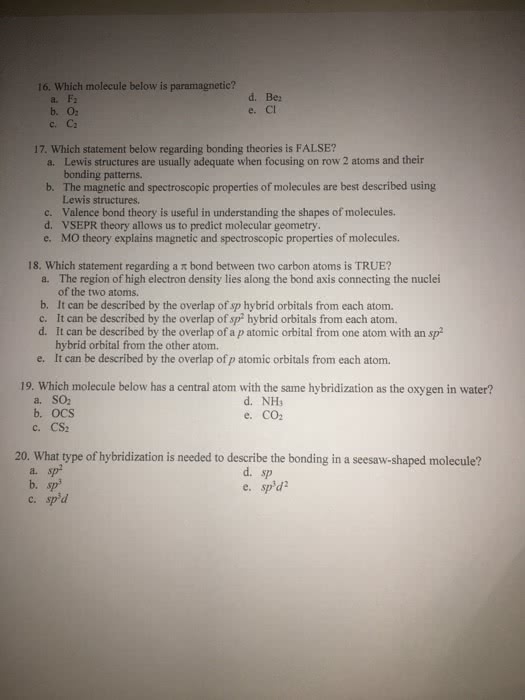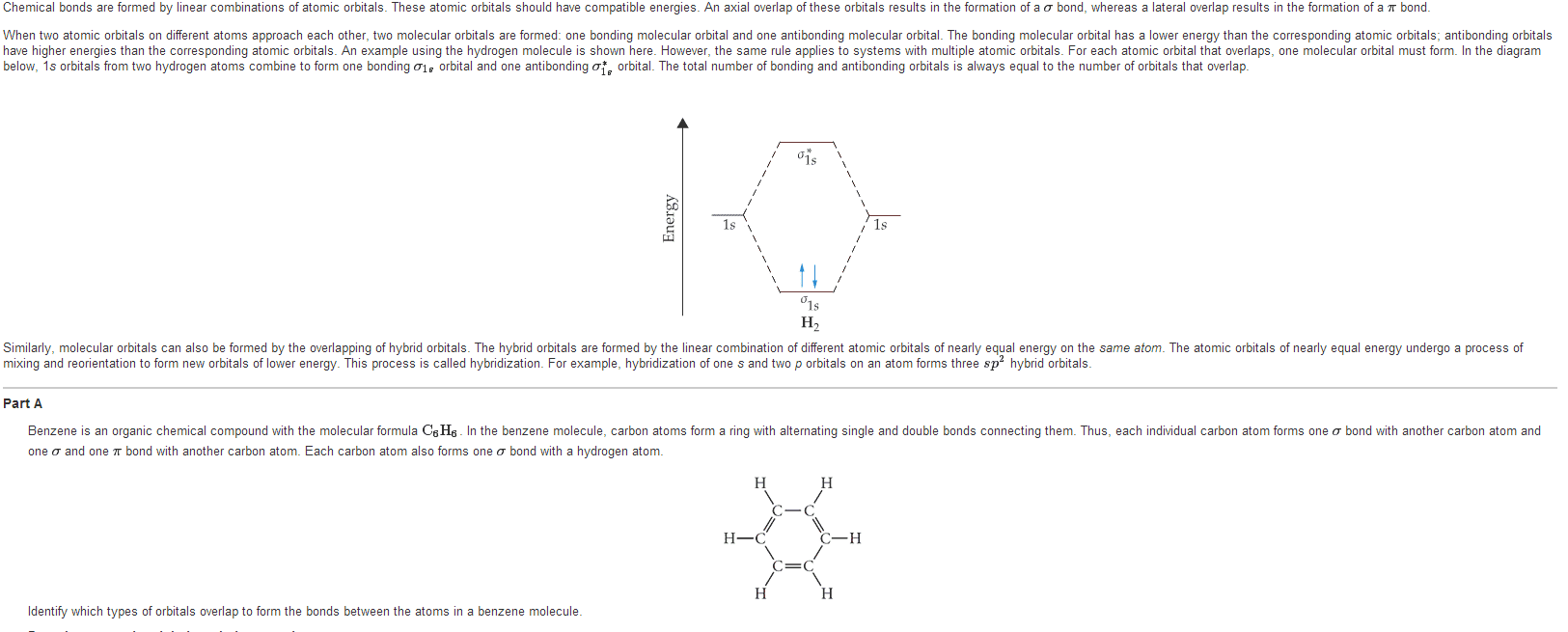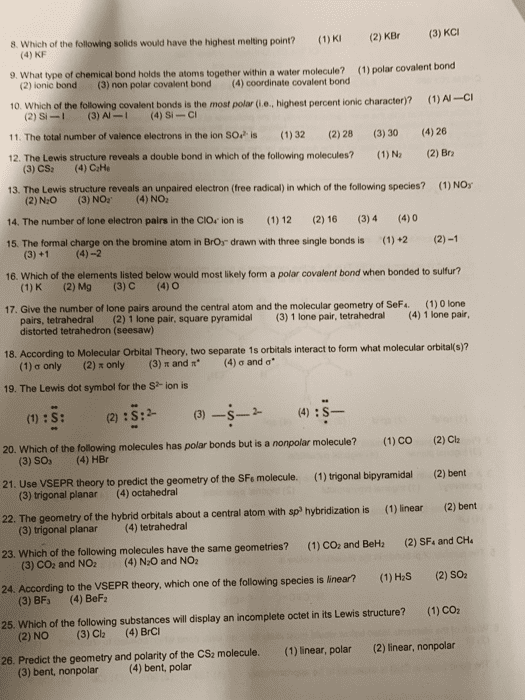CHM136H1 Chapter Notes - Chapter 1.5-1.6: Orbital Hybridisation, Atomic Orbital, Linus Pauling
41 views3 pages

34
CHM136H1 Full Course Notes
Verified Note
34 documents
Document Summary
Two models have been developed to describe covalent bonding: valence bond theory and molecular orbital theory. Each model has its strengths and weaknesses, and chemists tend to use them interchangeably depending on the circumstances: valence bond theory is the more easily visualized of the two. According to valence bond theory , a covalent bond forms when two atoms approach each other closely and a singly occupied orbital on one atom overlaps a singly occupied orbital on the other atom. Such bonds, which are formed by the head on overlap of two atomic orbitals along a line drawn between the nuclei, are called: in other words, the h h bond is cylindrically symmetrical. If the two nuclei of the h2 molecule are too close, they will repel: thus, there is an optimum distance between nuclei that leads to maximum stability has a bond strength of 436 kj/mol. In other words, 436 kj/mol of energy would be needed to put into.
Get access
Grade+20% off
$8 USD/m$10 USD/m
Billed $96 USD annually

Homework Help
Study Guides
Textbook Solutions
Class Notes
Textbook Notes
Booster Class
40 Verified Answers
Class+
$8 USD/m
Billed $96 USD annually

Homework Help
Study Guides
Textbook Solutions
Class Notes
Textbook Notes
Booster Class
30 Verified Answers


